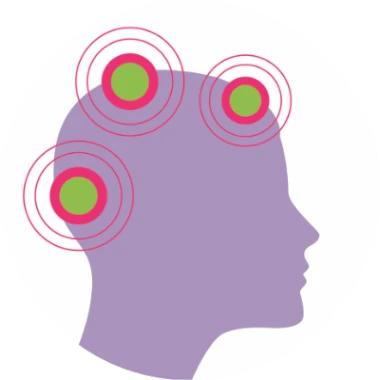A scaly rash with redness and itching in the head area for weeks: this is how seborrhoeic eczema - also known as cradle cap in babies - usually appears. It is medically harmless, not contagious and usually disappears within three months, but can recur time and time again and cause severe distress to those affected.
Seborrhoeic eczema mainly manifests itself on skin rich in sebaceous glands - especially on the face and hairy scalp. There it can lead to redness, scaling and itching.
Various factors interact in this complex symptomatology. These include, in particular, increased sebum production, but also heavy sweating, stress, immune deficiencies, sensitive skin and (especially in the diaper area) accumulated moisture and friction. Skin germs such as yeast fungi, which naturally colonize the skin but become prevalent under "favorable" influences, also appear to play an important role. Hereditary factors (familial clustering) and hormonal disorders or fluctuations (e.g. during puberty) also appear to favor the development. However, the causes are still only partially understood.

Seborrhoeic eczema can occur once, chronically or in episodes, between which it often subsides completely. Typical symptoms in the affected skin areas include
Eczema most frequently occurs in the area of the hairline and hairy scalp. The dandruff can accumulate on the hair and shoulders. On the face, the eyebrows, the region between the nose and mouth and the beard area are particularly affected, sometimes also the nose, ears, forehead or chin. Sometimes areas of the breastbone, genital region, body furrows or areas of skin between the shoulder blades are also affected, as well as the diaper area in infants and small children.

Seborrhoeic eczema can manifest itself simultaneously in different areas of the body. In particular, a distinction is made between affected areas of skin on the scalp, face, body and diaper area as well as the occurrence in infants up to three months of age (type 1 - cradle cap, which usually heals on its own) and in adults (type 2). It is also classified according to its origin and appearance.

Skin care products
The symptoms often subside with the use of skin care products. Shampoos, ointments or creams containing tar, salicylic acid, selenium, zinc, urea or active complexes with tea tree oil and thymus peptides can help.
If this is not sufficient, other therapeutic agents, most of which are available on prescription, are applied externally, in particular:
Anti-fungal agents (topical antimycotics) in the form of creams, lotions or shampoos, particularly to inhibit the growth of the yeast fungus Malassezia
Corticosteroids ("cortisone")
Calcineurin inhibitors (e.g. tacrolimus, pimecrolimus)
For bacterial infections, also local or internal antibiotics
As a general rule, if the type of eczema is unclear or if it does not heal promptly, those affected should consult a dermatologist.